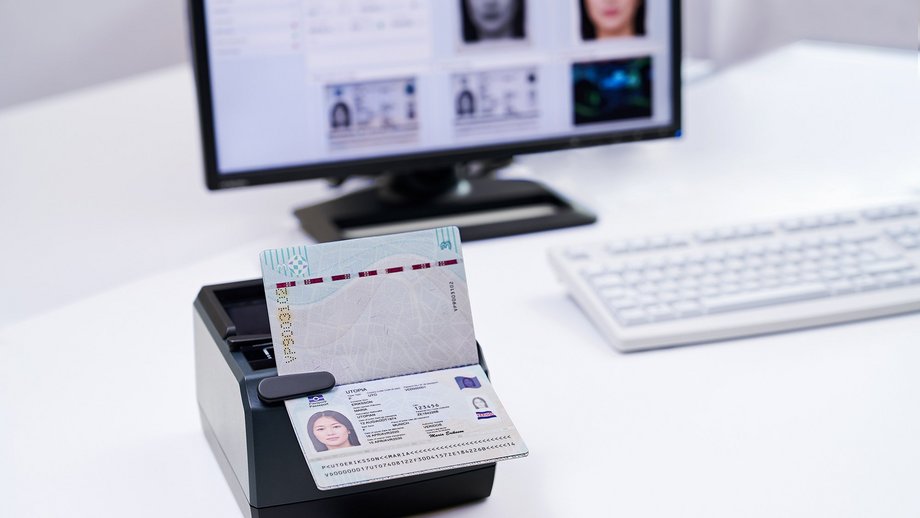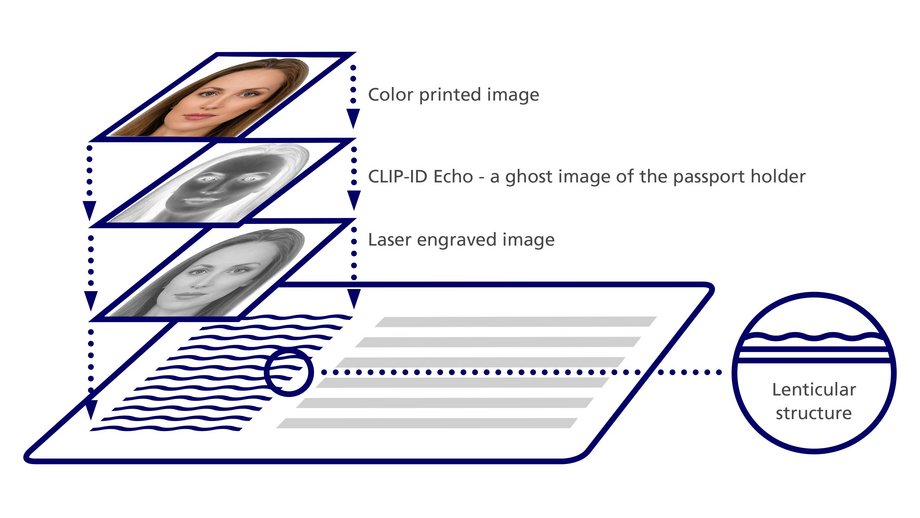Overcoming passport portrait challenges
For over two decades, the passport sector has been transitioning to the use of color personalization on polycarbonate. However, when the polycarbonate data page was first introduced, passport issuers lost the ability to print color portrait photos on that plastic page and had to revert to black and white (previously, color pictures were printed with inkjet technology on a paper data page which was then laminated).
Polycarbonate passports have now become the global standard, but today’s governments expect them to feature a high-quality color photo. According to ABI Research, 104 million polycarbonate (PC) passports were shipped worldwide in 2022, up from 60.1 million in 2020. By 2025, that number is expected to hit 125 million,4 with around 50 countries having issued PC passports.
The challenge that Veridos rose to was to create a truly vivid and highly secure color image on a PC data page. Getting that combination right is vital because the passport photo is a primary area of focus for forgeries, especially when fraudsters increasingly use freely available ‘morphing’ software to blend a copy of a genuine passport photo with a fraudulent portrait.
CLIP ID’s cutting-edge technology not only addresses that challenge of printing color on polycarbonate, but it does so by taking image security to a new level, making the image impossible to forge:
CLIP ID personalization splits a single digital photo source into grayscale and color versions using a proprietary Veridos technique. Once those are combined on the page, they are inseparable. While the grayscale photo is lasered into the document along with the biographic data, the color fraction of the photo is printed on the special structured CLIP ID area of the document body, which is introduced in the lamination process. The joint photos together show a perfect color image. That also makes it easy to detect a manipulated document simply by touching the image with a finger or viewing it under an infrared light.
- Clarity of image The quality of the image makes CLIP ID technology stand out from the competition. It can capture photos at 600 dpi, which is up to four times the resolution offered by other technologies.
- Skin tone CLIP ID technology renders skin tone very accurately, a critical capability for ensuring inclusivity across all cultures and global regions.
- Cost-effective production Rather than creating multiple layers, the CLIP ID solution uses a sophisticated lens structure that can be easily integrated into the ID card or biometric passport during production, with no additional steps required. That ensures the blank document production is cost-effective.
- Personalization By combining laser engraving with inkjet technology during personalization, consumables are saved, adding to the cost-effectiveness of the solution.
- Durability and long-lasting The CLIP ID process produces a robust image designed to stay sharp throughout the lifespan of any ID card or passport.





